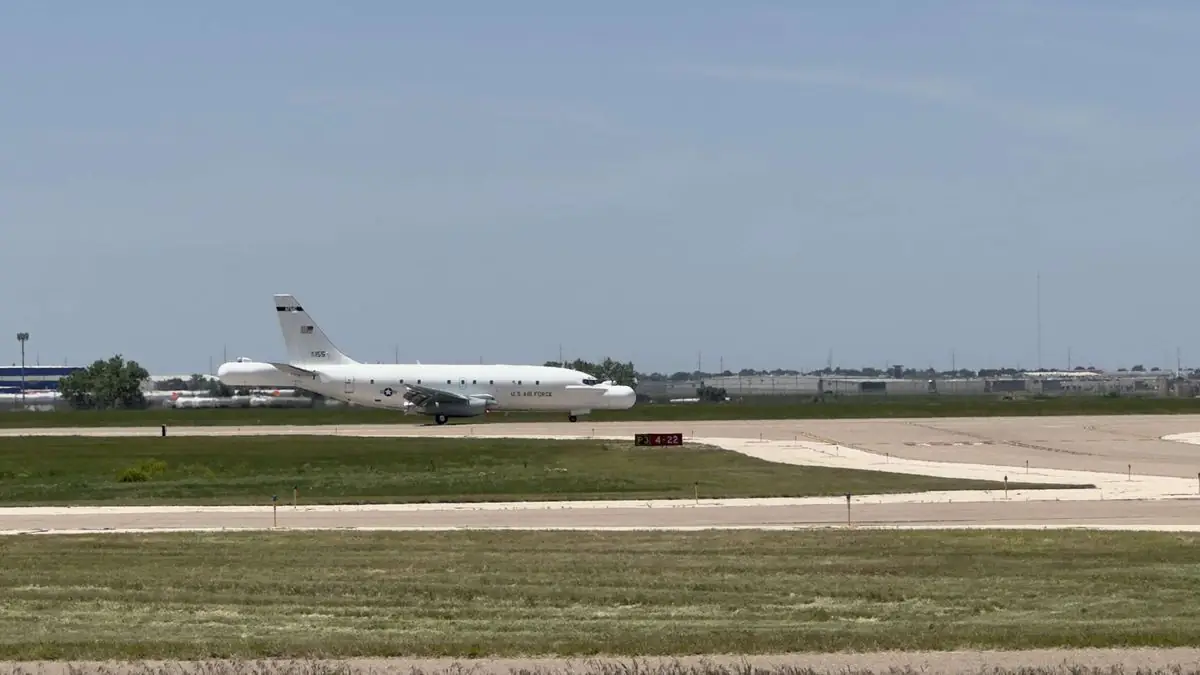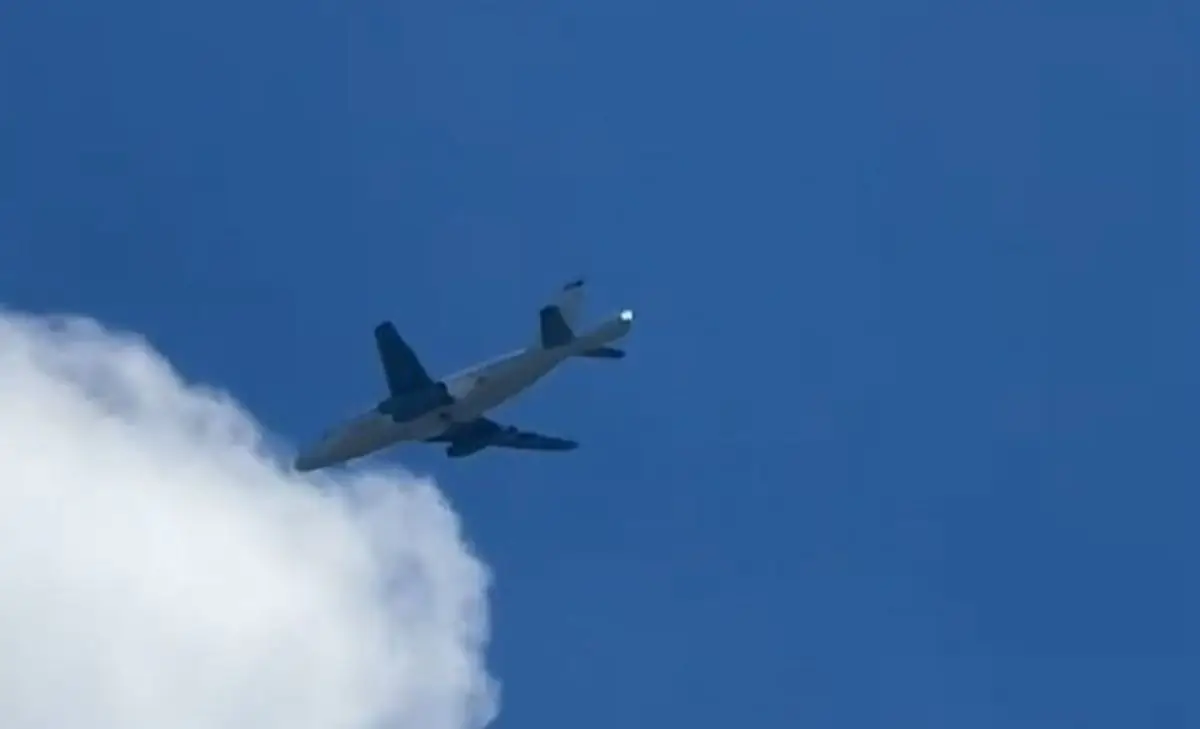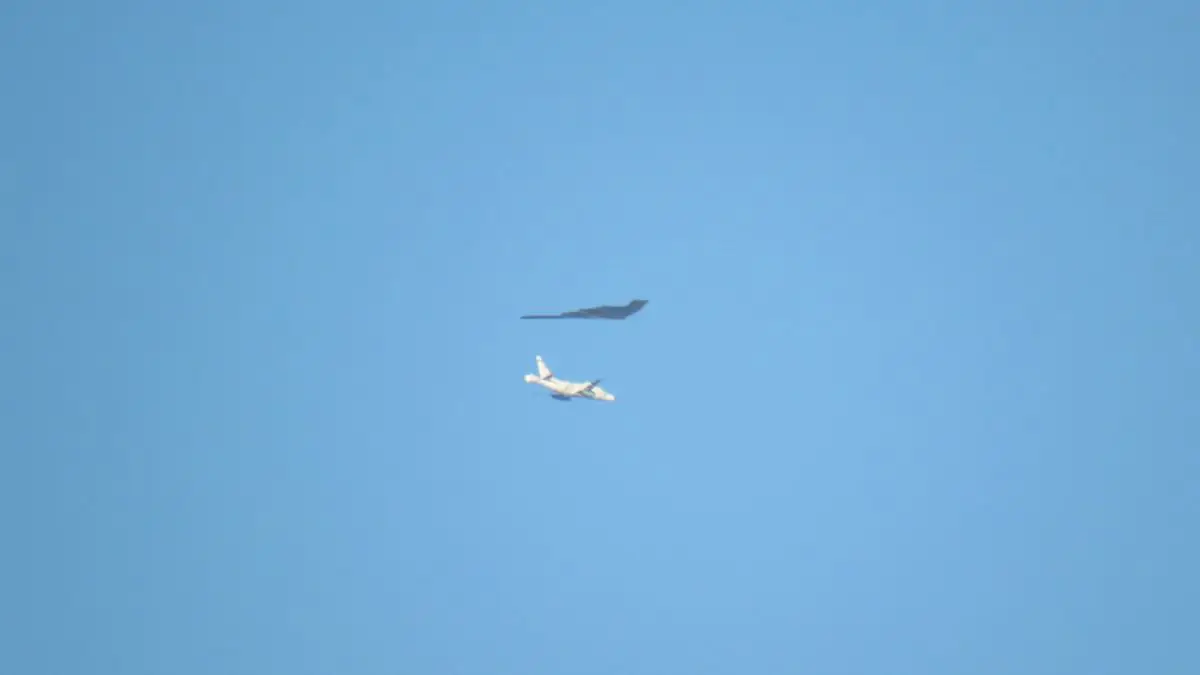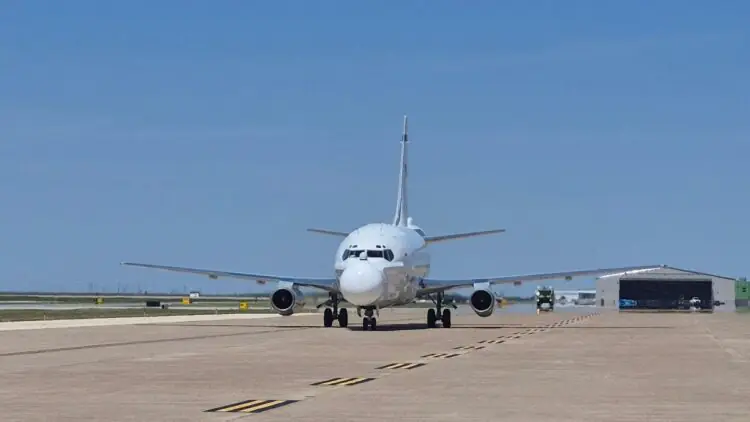A modified Boeing 737, better known as RAT55 (Radar Airborne Testbed), has just completed a cross-country flight in the U.S. The reason for the flight remains unknown, but the secrecy surrounding it is hardly surprising – this aircraft rarely appears in public, let alone in photos. Operated by the U.S. Air Force Materiel Command, RAT55 was converted into a specialized radar test platform for evaluating stealth technologies. During this particular trip, the aircraft made stops in Arkansas and Texas, offering a rare opportunity for observers to get a closer look.
According to aviation photographer Jason Zika, RAT55 arrived at Amarillo International Airport in Texas at 2:40 PM and departed an hour later. “As far as I know, it was just a fuel stop,” Zika said. “RAT55 was supposed to show up here a few months ago but never did.”

The aircraft flew from a test and training range in Nevada to Northwest Arkansas National Airport. On its return journey, it stopped in Amarillo, likely for refueling. The reason for its visit to Arkansas at this particular time remains unclear, and the U.S. Air Force Materiel Command has not provided any additional details.
One notable detail is that King Aerospace has a facility at Northwest Arkansas National Airport. Back in 2022, RAT55 was spotted at another King Aerospace site – Ardmore Municipal Airport in Oklahoma – during another rare appearance. Whether this latest trip is connected to a visit to King Aerospace, a company known for maintenance and extensive modification work including for the U.S. military, is currently unknown.
RAT55 spends most of its flight hours over vast and remote testing ranges that stretch across southern and central California and southern Nevada. It’s most frequently seen flying in airspace near Area 51 and Edwards Air Force Base. Like any aircraft, it requires regular maintenance. While past movements of RAT55 were typically planned to avoid public attention as much as possible, that level of secrecy didn’t seem to apply this time. It’s possible that avoiding visibility is no longer a priority for the aircraft.

RAT55 is unlike any other aircraft in the world and plays a critical role in the development and sustainment of U.S. airborne stealth technology. It’s equipped with two large radar arrays – one mounted at the front and another at the rear – which allow it to precisely measure the radar signatures of stealth aircraft in flight alongside it. This airborne evaluation is used to validate stealth systems. The aircraft also carries electro-optical and infrared sensors and can be fitted with additional pods for other testing systems.
While there are ground-based systems capable of similar signature measurements, RAT55’s airborne platform provides the unique advantage of assessing targets from any angle and over extended periods. For instance, when B-2 Spirit bombers come out of depot-level maintenance, they often fly with RAT55 to verify that their stealth characteristics meet design specifications. Beyond routine evaluations, RAT55 is also involved in some of the Pentagon’s most advanced and classified stealth aircraft development programs.

Given the numerous combat aviation projects currently underway in this new era of so-called “great power competition,” RAT55 has no shortage of work. And that workload is only expected to grow as upcoming platforms enter flight testing – ranging from the B-21 bomber to a variety of advanced unmanned systems and the next-generation F-47 fighter (you can learn more about that program at this link).
Source: twz









